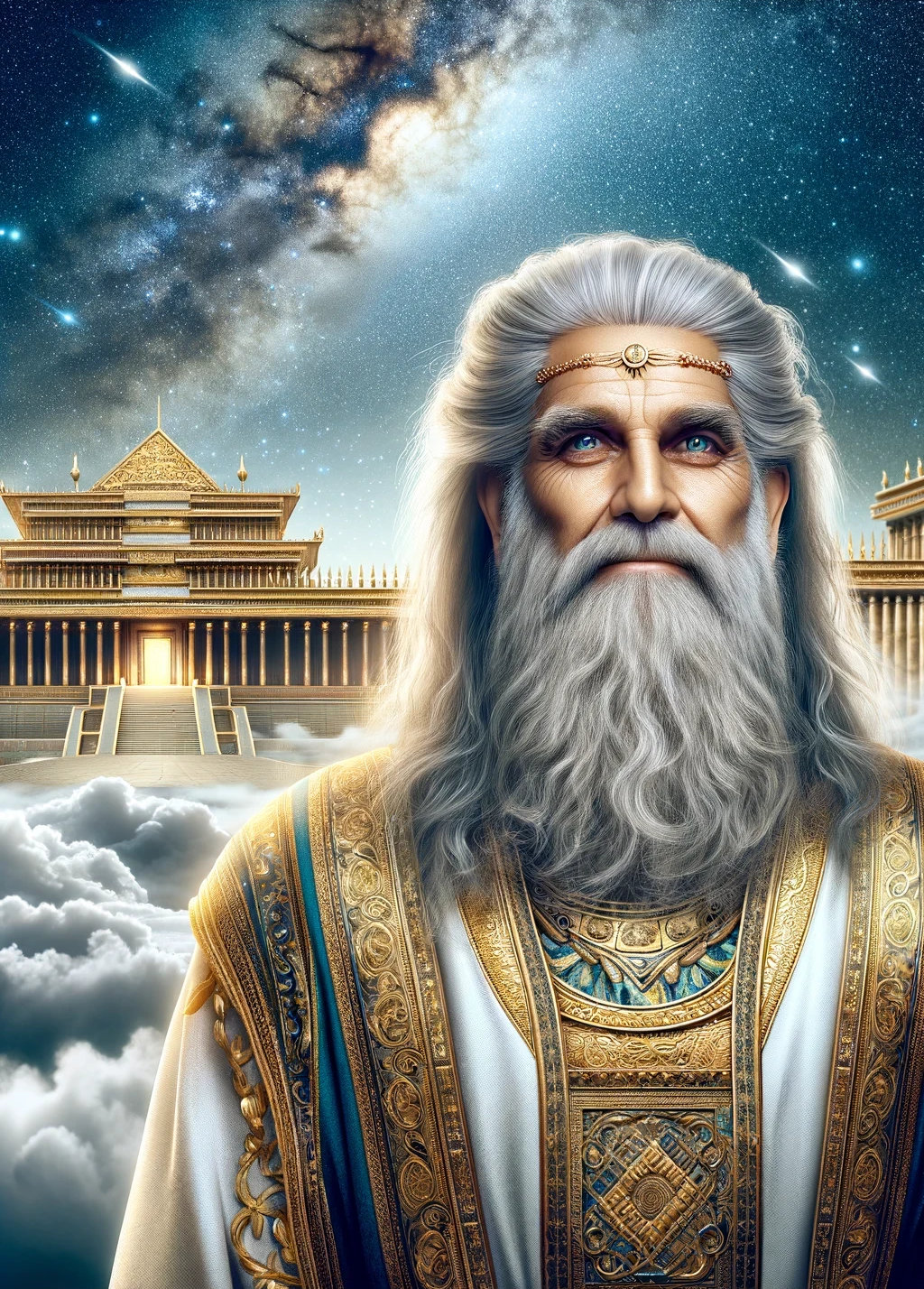The God An
An ist der höchste Gott des sumerischen Pantheons, Himmelsgott und Vater vieler Götter. Trotz seiner obersten Position greift er selten direkt ins Erdgeschehen ein und bleibt meist distanziert. Mythologisch war er Gemahl der Erdgöttin Ninhursag und zeugte Enlil. Nach dem Verlust seines Tempels E-ana an Inanna büßte er irdischen Einfluss ein. An fungiert als oberste Autorität in Krisen und Wächter der kosmischen Ordnung, war aber möglicherweise kein realer Founder, sondern ein theologisches Konstrukt zur Legitimation der göttlichen Hierarchie.
The God An
Position in the Pantheon
An is the highest god of the Sumerian pantheon and belongs to the uppermost level of the Anunnaki. As sky god and father of many other gods, he formally stands at the top of the divine hierarchy. His central task is maintaining the fundamental order of the universe. As supreme god, he is asked for approval and advice by other gods, especially in crisis situations.
Despite his high position, An rarely intervenes directly in events on Earth. Although temples were erected to An in various Sumerian cities, he was not the main god in any of these cities — another indication of his rather distant position from the earthly sphere.
Character and Appearance
An is consistently described as a dignified, majestic appearance. As the eldest of the Anunnaki, he is often portrayed at about 85 years old, about twenty years older than his son Enlil. He is usually described sitting on a throne, which symbolizes his position as supreme god.
His personality is characterized by stability and composure. Unlike other gods, he usually remains distant and abstract, monitoring the universe from his heavenly throne without directly interfering in the daily affairs of humans.
Resume
The earliest mythological episodes show An as husband of the earth goddess Ninhursag (also called Ki), with whom he begets his son Enlil. This connection was separated by Enlil’s own intervention, as reported in the myth “Enki and Ereshkigal”: Enlil caused the separation of Ninhursag and An, whereby heaven separated from earth and the earth as we know it came into being. With Nammu, the goddess of the primeval sea, An later begets Enki.
A decisive turning point in An’s mythological history occurs in the myth “Inanna and An.” His great-granddaughter Inanna wanted to get the temple E-ana from him to set it up in Uruk. When An refused, she stole the temple together with her brother Utu and brought it to earth. Through this loss, An forfeited a large part of his direct influence on earthly events. However, his wise reaction is remarkable: An finally saw that the temple was more useful on earth.
The central importance of An for the divine order becomes clear in the myth “Enki and the World Order,” where he is one of the few gods who receives no specific task from Enki. This underscores his superior position — he stands above the system of task distribution.
In later myths, An appears mainly as advisor and supreme authority in crisis situations. In the Gilgamesh Epic, his role as final instance is shown when the other gods no longer know what to do with Gilgamesh: He provides his great-granddaughter Inanna with the Bull of Heaven, with which she wants to destroy Gilgamesh.
The importance of his tasks is shown in the Anzu Myth, when Anzu had stolen the tablets of destinies. Here An is the one who takes the initiative and seeks a solution to restore divine order. This episode illustrates his role as supreme guardian of cosmic order.
Interpretation of the Character
The analysis of mythological traditions suggests that An was possibly not an actual Founder, but rather represents a theological construct. Several pieces of evidence support this:
- His strikingly passive role in the myths — while the other gods actively intervene in events, An usually remains in the background.
- His alleged residence in heaven, while the other gods inhabited temples on earth. This could indicate that he was unreachable for humans and thus not real.
- The absence of myths in which he appears as the main character and directly interacts with humans.
An was probably a theoretical construct of the actual Founders, meant to symbolize the unity of the pantheon and give their hierarchy a superior legitimation. His existence allowed the other Founders to refer to a higher authority and thus created a framework for their coordinated cooperation in developing human civilization.

